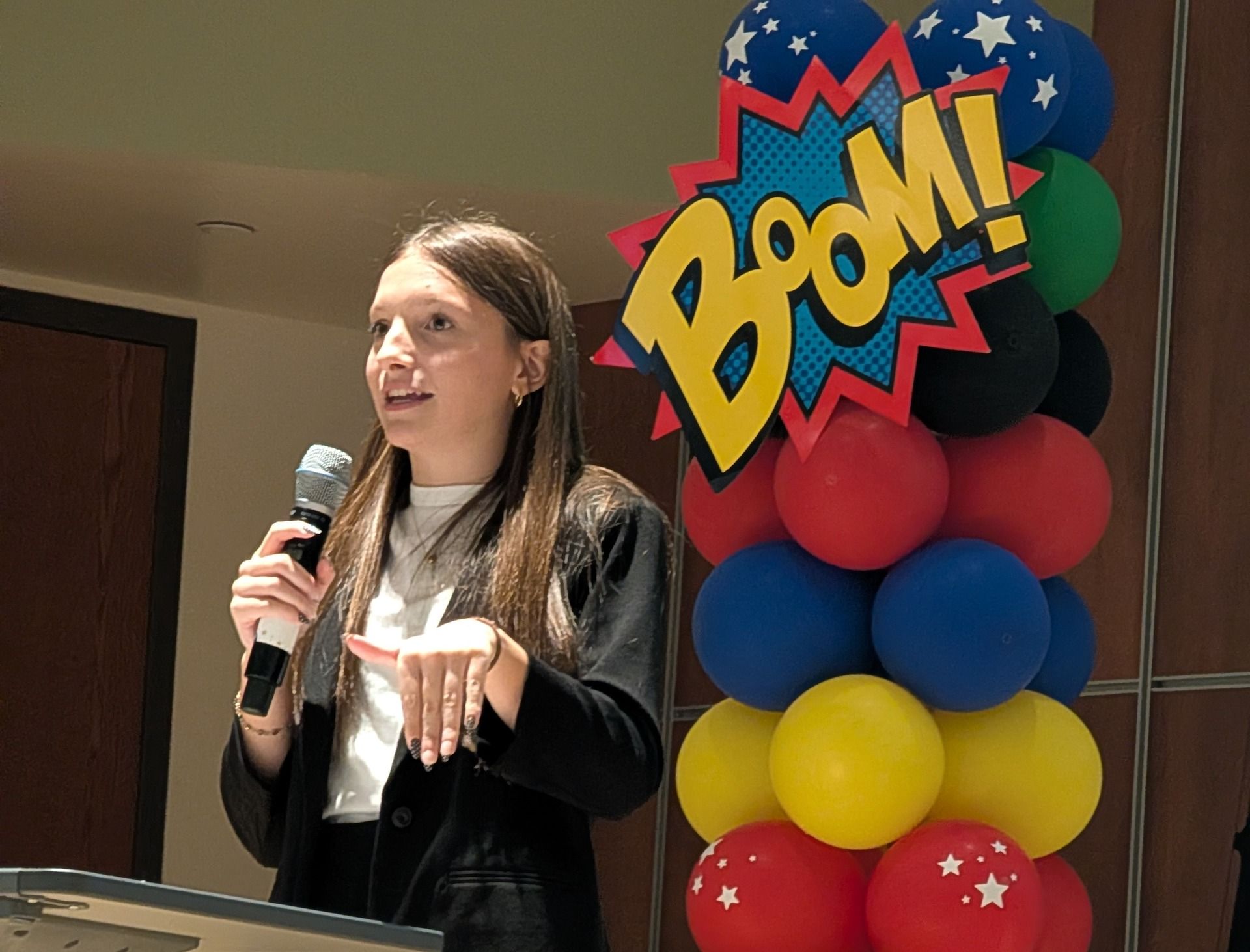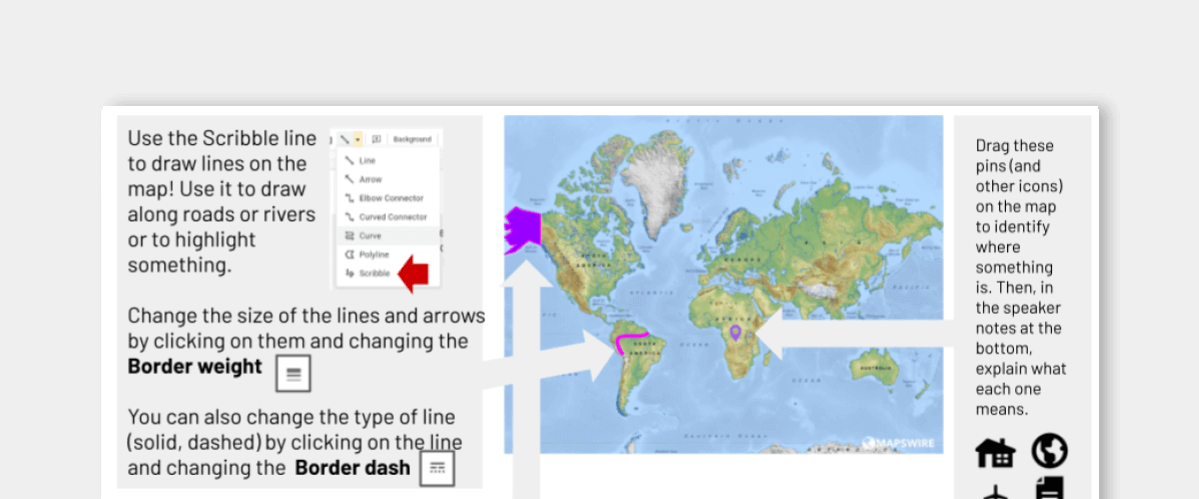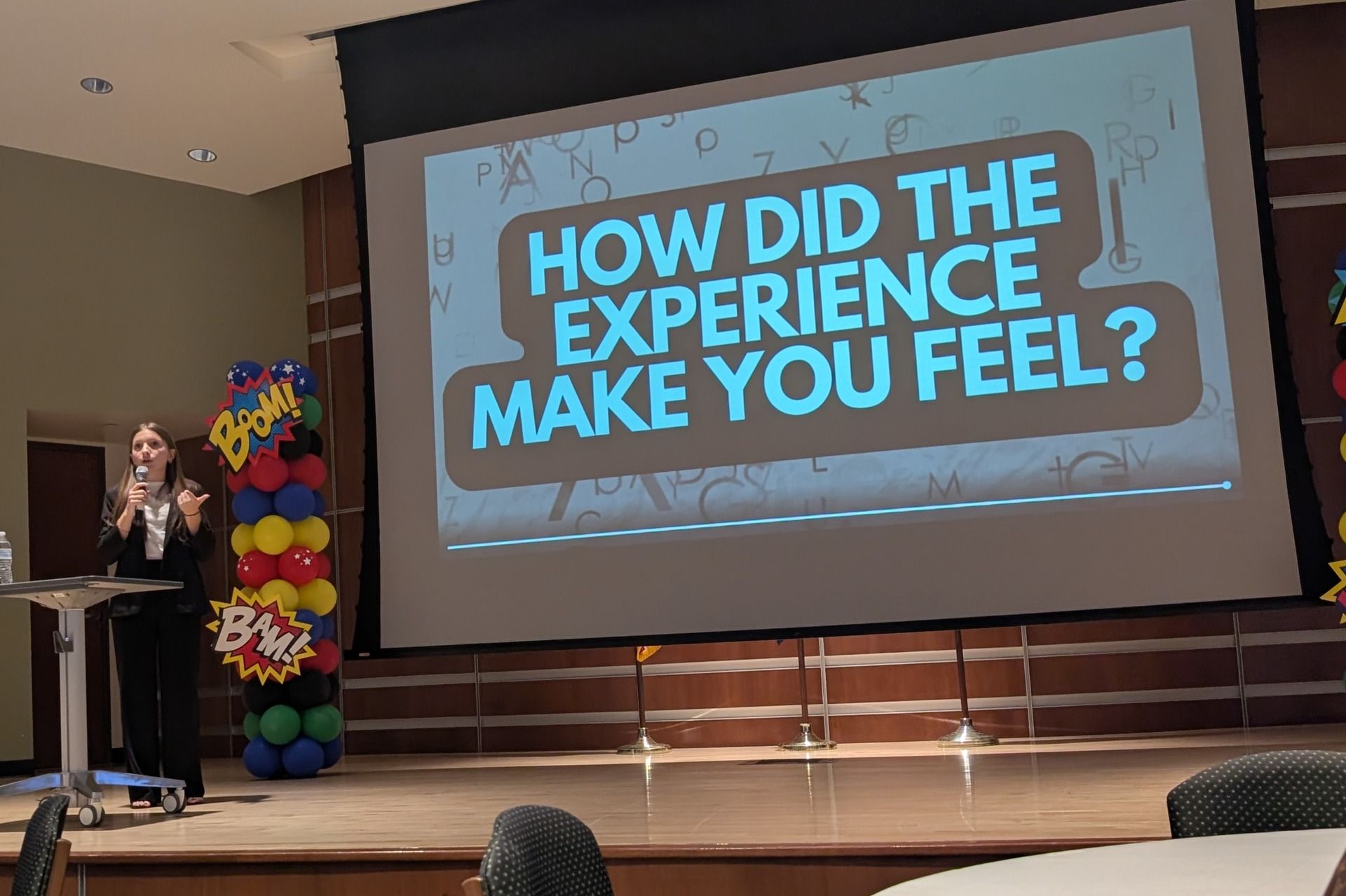- Ditch That Textbook
- Posts
- 🗑 What struggling students really want you to know
🗑 What struggling students really want you to know
Practical tips for class today from a student's perspective
Makenzie needs to tell you something …
I have a message for you — from some of your quietest students … from students that might not speak up.
It’s from some of your struggling students — especially those with dyslexia (diagnosed or not) and other learning difficulties.
Last week, I went to my state edtech conference — the Indiana Connected Educators Conference. (Kudos to Ali and John and Sarah and Brenny and Jason and all the board for a job well done.)
The keynote speaker? A student.
Her name is Makenzie Gilkison. 15 years old. She has dyslexia — and she’s been brave enough to use her voice and experience to inform and inspire teachers all over the United States.
The Associated Press interviewed her about how she’s using AI to help with her dyslexia.
She was interviewed about it by EdTech Magazine at the ISTE Conference.
And last week, she spoke from the stage to a room full of adults about it for roughly 45 minutes.

Makenzie Gilkison keynotes the Indiana Connected Educators Conference.
I get to attend lots of educator conferences — and I see lots of keynote speeches. But rarely do I feel so compelled by the message that I have to share it with you here.
Today, I’m compelled.
In today’s 💡 Big Idea, I’ll summarize Makenzie’s messages and suggestions to teachers — tips you can start using today to better support students with dyslexia and other learning challenges.
PS: My in-person workshop — Student Writing in the AI Age — is filling up fast! Details below. If you’re in Indiana (or the Midwest) and want to attend, the workshop is on November 17. Hope to see you there!
Inside:
🎙️ In-person workshop: Student Writing in the AI Age
👀 DTT Digest: 4 resources worth checking out
💡 The Big Idea: Practical ways you can support students with dyslexia
🗄 Template: A draggable interactive map template
😄 Smile of the day: Costumes — all in, or nah?
👋 How we can help
🎙️ In-person workshop: Student Writing in the AI Age
I’m trying something new: an in-person workshop down the street from my school!
🚨 And there are less than 30 seats remaining! 🚨
Title: Student Writing in the AI Age
Description: When ChatGPT can do the writing, how do we keep students thinking? Get plenty of real talk and practical strategies here.
Date: Monday, November 17, 2025
Time: 8:30am to 3:30pm
Place: The Inkwell, 114 N Jefferson St, Rockville, IN 47872
Cost: $99 (includes lunch on-site) (group discount pricing available)
If you’re from Indiana or Illinois (or the Midwest): You might be close enough to consider this! Would love to share the day with you working through this topic.
If you’re NOT from Indiana or Illinois: I’m planning on turning this workshop into an asynchronous online course in 2026. I’ll keep you posted!
Note: Please only register if you’re planning on attending in-person.
PS: Are you interested in bringing me to your school, district, or even to run this workshop? Hit reply and let’s discuss!
👀 DTT Digest
4 teaching resources worth checking out today
🗨️ 24 discussion strategies and activities for the classroom — Use these discussion strategies to get your students talking about learning in class.
🪝25 engaging lesson hooks — Need some creative ways to get class started? You’ll love our “lesson hooks”!
💼 Our free DTT templates library — Get tons of free Google Slides and PowerPoint templates. Make a copy, adjust as necessary, and assign!
🤖 Our free AI teacher toolkit — This free downloadable PDF is full of AI tools, prompts, teaching ideas, and even a printable page to send home to parents.
🗄 TEMPLATE 🗄️
🗺️ A draggable interactive map template

Get this free interactive map template in Google Slides / PowerPoint.
This Google Slides / PowerPoint template is so simple but so effective …
It’s a map … but it has icons you can drag on top of it! Great for labeling and geography activities.
Use the scribble line tool in Google Slides to draw lines on the map.
Use the polyline tool to draw custom solid color shapes (see Alaska in the map above).
Have students explain what they put on the map by writing it in the speaker notes at the bottom.
💡 THE BIG IDEA 💡
🤝 Practical ways you can support students with dyslexia

Makenzie Gilkison challenges adults to think differently about dyslexia.
Fifteen-year-old student Makenzie Gilkison pushed the thinking of some teachers in the room at the Indiana Connected Educators Conference last week.
At first, she played an instructional video with auditory and visual distractions, asking them to pay attention and remember specific details — much like a student might in class.
“How did the experience make you feel?” she asked, connecting to the idea that their students might be frustrated by the same struggles the adults experienced in that simulation.
The next simulation: her adult audience had to take notes with their non-dominant hand. And as she rapidly gave them information, it was just too fast to keep up.
Again, the prompt: “How did the experience make you feel?”
It’s an important reminder for all of us in education — what it’s like to struggle with learning differences that we often don’t think about.
For many of us in the audience, Makenzie was the voice of our own students who might not tell us about struggles or situations they’re wrestling with — but they’re still struggling with them … and we could help if we only knew.
Makenzie told us about her experiences — and her mom (Nadine Gilkison, a director of technology integration in Indianapolis) told similar stories about her son, Cole, who also struggles with dyslexia.
8 practical ways to support students with dyslexia
1. Add learning materials to a learning management system. At her school, Makenzie’s teachers and fellow students have access to the Canvas learning management system. When teachers simply put all of their learning materials there, it gives her 24-7 access to them so she can go back over them if necessary.
2. Make sure accessibility tools are turned on. Chromebooks, iPads, laptops and other devices have built-in accessibility tools — like screen magnifiers, speech-to-text, text-to-speech, and others. These are game changers for students with learning difficulties — but only if they’re enabled. Sometimes, it’s as simple as flipping a (digital) switch … but you have to know to flip it.
3. Don’t draw attention to the situation. If accommodations need to be made — or a situation needs to be discussed — do it as discreetly as possible. This message came straight from Makenzie’s heart. “We do not like being singled out,” she said. “Middle school and high school are hard enough.”
4. Be open and inviting when students approach you. It’s intimidating for students to approach teachers. It can feel like a confrontation — even if it’s about a minor accommodation they’re seeking. They’re not doing it because they’re lazy or want to cause trouble. They want a level playing field and to be able to learn. Be supportive and understanding.
5. Be an ally for a student with learning challenges. In seventh grade, Makenzie had a teacher who supported her when she needed to have conversations with her teachers. Sometimes, the teacher would walk up to the teacher with her — giving an adult presence in the conversation. Other times, the teacher would be willing to talk to a teacher on Makenzie’s behalf if the teacher was hesitant or resistant. “You got this,” her teacher said. “I’m just going to give you a little bit of a boost.”
6. AI can help. Makenzie has used AI chatbots like SchoolAI’s Spaces to get answers to her questions. She isn’t afraid to ask a teacher now, but she doesn’t want to impose. “I’d have to waste HER time and MY time,” Makenzie said. “I can waste the bot’s time. I don’t feel sorry for it. It’s their job.”
7. Dyslexia is unique. Not everyone’s experience with dyslexia is the same, Makenzie said. The way it impacts her is different than the way it impacts her brother, Cole. Just because you have (or had) one student with dyslexia doesn’t mean that others will have the same experience or needs as others.
8. Provide support to newly diagnosed students. When Makenzie was diagnosed with dyslexia, it was hard. To help other students, she has written a letter of support and encouragement — to students AND to teachers. Plus, she recorded audio of those letters for extra accessibility.
Students have a right to accommodations
In the end, Makenzie said she wants teachers to remember a few things.
Her accommodations aren’t an option. It’s not just something nice you’re doing for students. It’s their right.
Having a learning disability like dyslexia is like running a 5K race with a weighted jacket. Accommodations just level the playing field so she’s able to run alongside her classmates.
She punctuated it with this powerful quote: “The ideas are there. The intelligence is there. The world just hasn’t learned how to listen yet.”
Want Makenzie to speak at your event?
She has spoken to students and teachers at a variety of conferences. She’s booked to speak at FETC (Orlando, Florida), SXSW EDU (Austin, Texas), and MACUL (Grand Rapids, Michigan) in 2026.
If you’d like to inquire about having her speak at your school, district or event …
😄 Smile of the day
Are you a “yep!” or a “nope.”???
👋 How we can help
There are even more ways I can support you in the important work you do in education:
Read one of my six books about meaningful teaching with tech.
Take one of our online courses about practical and popular topics in education.
Bring me to your school, district or event to speak. I love working with educators!
What did you think of today's newsletter?Choose the best fit for you ... |

